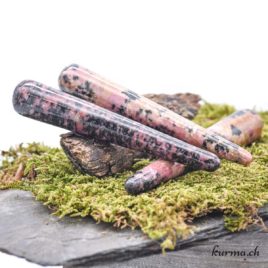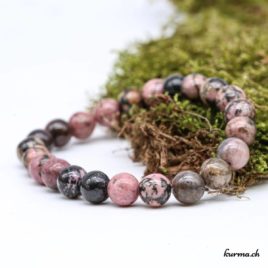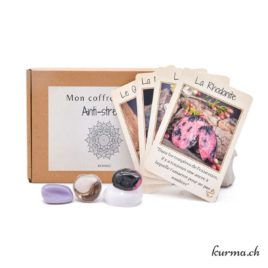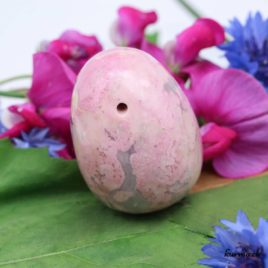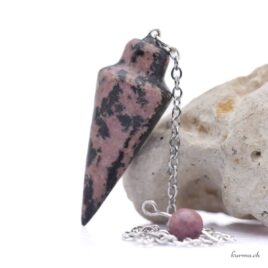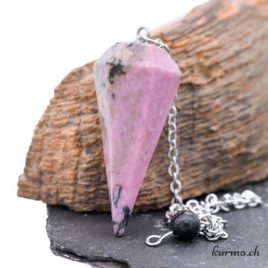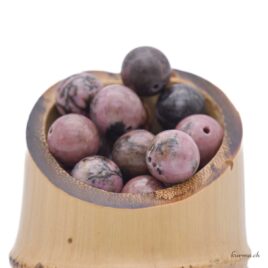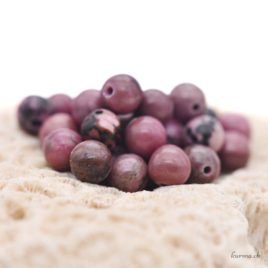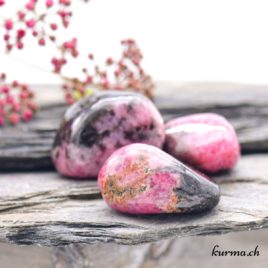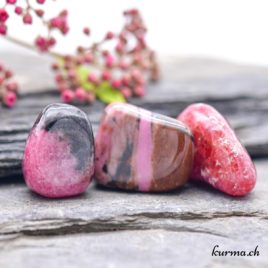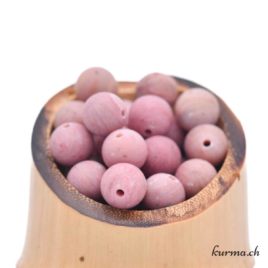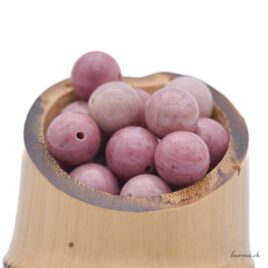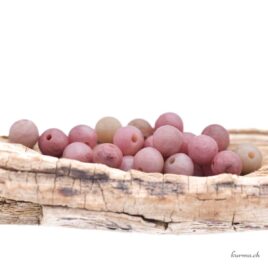Rhodonite
Rhodonite is a very complete stone, combining the protective virtues of its black veins and the soothing properties of its pink color.



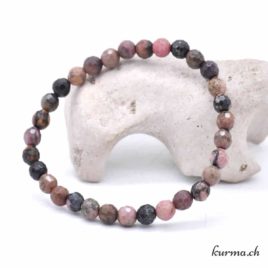
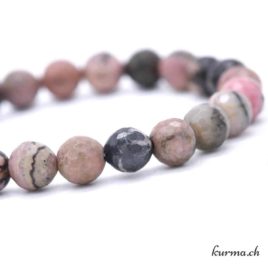
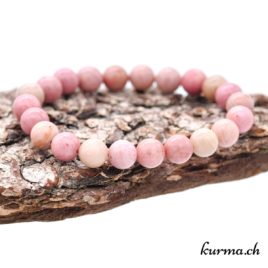
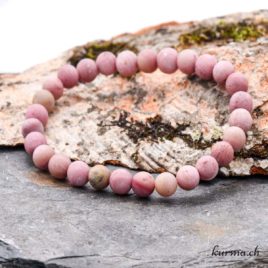
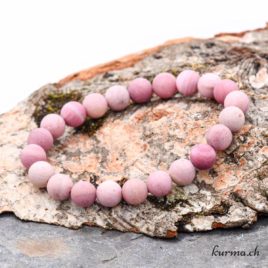

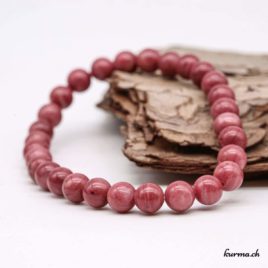

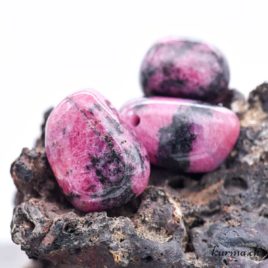


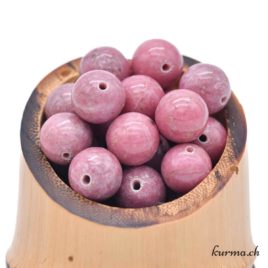
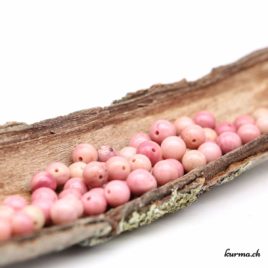
The virtues and properties of Rhodonite in lithotherapy
When you're going through emotionally intense upheavals, when grief weighs on your heart or when life's trials have wounded you, Rhodonite supports you by bringing comfort and helping you to heal your wounds.
It's the healing stone par excellence!
Her wisdom helps you to resolve conflicts that are fighting inside or outside you. She invites you to forgiveness, tolerance and understanding. With her, you can take a fresh look at the pains and wounds that resonate in every conflict and act accordingly to heal them, without letting yourself be biased and carried away by feelings of jealousy or frustration. She helps you to understand the causes and to act on them without placing yourself in the role of victim or persecutor.
It's a precious ally that can help you stay on track, stay clear-headed and not let anxiety get the better of you when emotionality becomes difficult to cope with, when emotional deficiencies make you suffer, when an emotional shock upsets you, when stress gives you palpitations or when your hypersensitivity is too much to bear.
It can also help angry people who lose their temper easily to deal with their emotions in a more reasoned way.
On a physical level, Rhodonite can help heal wounds and soothe ulcers and insect bites. It improves blood circulation and, by working on the healing of the heart area, can prevent cardiovascular problems and accidents.
It can also alleviate various autoimmune diseases by working on the causes of the disease and can help promote fertility.
How to use Rhodonite
- To treat a scar, massage the affected area with argan oil or another oil of your choice, infusing it with Rhodonites.
- Wear Rhodonite daily directly on your heart to work on this area on a physical or emotional level.
- Wear this stone on you, in your hand, in your pocket or as a piece of jewelry to benefit from its anti-stress virtues.
- In the event of a shock or accident, take a Rhodonite with you immediately to avoid trauma.
Where to place Rhodonite?
- Rhodonite in your living space will diffuse soothing energies.
- It's ideal for the bedroom or a place dedicated to relaxation.
- In your car, if driving is stressful for you.
- In your1st aid kit.
Rhodonite, for whom?
- For ambulance drivers and anyone dealing with accidents or emergency situations.
- For people who are anxious, often sad or short-tempered.
- For all those for whom feelings of jealousy or frustration take up too much space.
- For people suffering from emotional deficiencies, hyperemotivity or hypersensitivity.
How do I purify Rhodonite?
Moon, running water, waveform, fumigation, singing bowl, wind/breath, prayers...Chakra
4ᵉ Chakra - HeartAstrological signs
Capricorn, Taurus and AriesElement
WaterRhodonite in mineralogy
Rhodonite is a calcium manganese silicate, occurring mainly in granular and rough masses, either formed primarily by hydrothermal processes, or tertiary by contact metasomatosis with manganese-rich clay sediments.
Its colors range from pink to dark pinkish-red (manganese), often with yellow veins of spessartine and black veins of manganese oxide.
Did you know?
The black parts of Rhodonite are due to erosion and are Psilomelane.
The history of Rhodonite
Rhodonite was first officially described by mineralogist Christoph Friedrich Jasche, manager of an Ilsenhourg mining plant, in 1819. It was named for its color: from the Greek rhodon, meaning "rose".
It has always been particularly prized in Russia, where it was widely used to decorate palaces and make many decorative objects.
In ancient Greece and Rome, this stone symbolized friendship and was often worn as an amulet by travelers to protect them from theft and attack.
Did you know?
Tsar Alexander II had the entire slab of his wife's tomb made from a single 49-ton block of Rhodonite! Hand-polished, it took 16 years to complete before it reached St. Petersburg Cathedral in 1906.
Lithotherapy
- Element(s) :
- Zodiac(s) :
- Aries, Capricorn, Taurus
- Purification :
- Singing bowl, Water, Fumigation, Moon, Form waves, Breath
- Caution(s):
- No
- Illness(es) :
- Autoimmune, Cardiac, Cardiovascular
- Physics :
- Cardiovascular (System), Healing, Blood circulation, Heart, Insect bite, Ulcer
- Emotional :
- Love, Anguish, Emotional injury, Emotional deficiencies, Anger, Hypersensitivity, Nervousness, Resilience, Stress, Tolerance, Trauma, Emotionality
- Spiritual :
- Protection
- Miscellaneous :
- Friendship, Caesarean section (scar), Fertility, Relationship (friendship), Relationship (love)
Mineralogy
- Hardness :
- 5.5-6.5
- Moths scale:
- 5, 6
- Strunz classification :
- Silicate
- Crystalline system :
- Triclinique
- Chemical element :
- Mn, Fe, Mg, Ca, Si, O
- Line color :
- White
- Density :
- 3.4-3.7
- Cleavage :
- Perfect
- Fracture:
- Unequal
- Transparency :
- Translucent to opaque
- Refringence :
- a=1.711-1.738, b=1.714-1.741, g=1.724-1.751
- Birefringence :
- Biaxial (+); 0.0130
- Fluorescence :
- Yes and luminescent
- Colors :
- Pink to brown, grey to yellowish
- Magnetism :
- no
- Radioactivity :
- no
Other anti-stress stones
*Please note! Some minerals may be toxic and must not be licked or ingested (as such or in the form of powder, elixir or stone water) or be in prolonged contact with the skin or mucous membranes.
*The information on the stones described here are general indications based on our research and experience, and are not exhaustive.
Reproduction in whole or in part of this content is prohibited. More info


